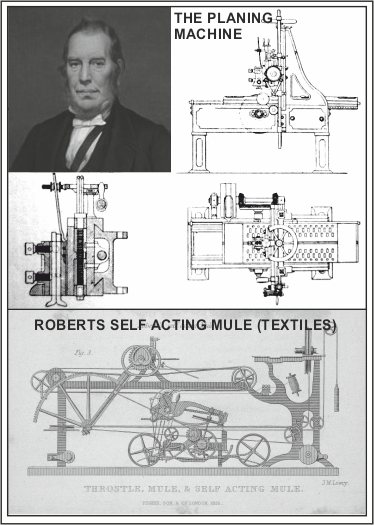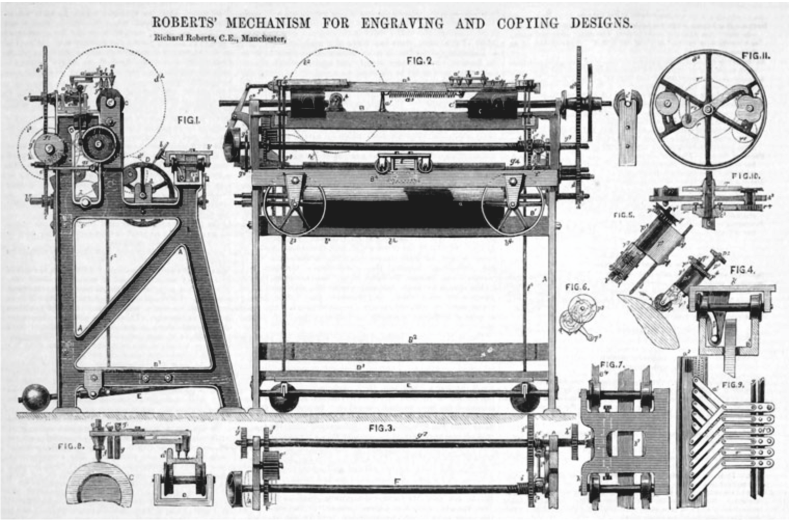V.Ryan © 2018-2022
A relatively unknown engineer and inventor, compared to the superstars of the Industrial Revolution. However, without the inventions, machines and engineering innovations, developed by Roberts, it could be easily argued, that the Industrial Revolution would have been at a much slower pace.
In engineering terms, he developed a precision gear cutting machine, followed by a precision machine for engineering precise flat surfaces, called a planer in 1817. This was at a time when precision engineered pieces, were often completed by hand work. He was also an innovator in the design of metal/screw cutting lathes. Some of his lathes were still in use, well in to the Twentieth Century.
Roberts went on to design a patented power loom in 1822, for the textiles industry. Part of the design for the loom led to Roberts designing a keyway grooving machine in 1824. This machine mechanised the fixing of gears and pulleys to shafts, a job that had previously been completed laboriously by hand. Roberts also invented the shaping machine (my favourite machine). Later he developed the first milling machines and a punching machine, that made it possible to rivet large plates together, required for the construction of bridges, including the Conwy and Britannia Bridges.
Roberts was an innovator as a railway engineer, designing and manufacturing several locomotives. His locomotives were in so much demand, that a second factory had to be built to cope with orders.
Roberts was probably the greatest engineer of the industrial revolution and yet died in poverty. His inventions were innovative with precision at their core. His engineering legacy continues to this day.

